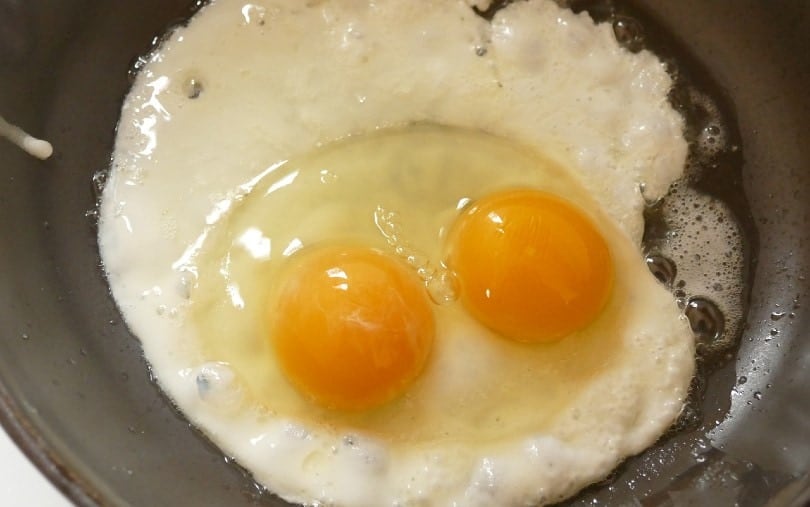Chicken eggs are one of the main reasons that people keep chickens. If you’ve never kept eggs before, you may not have experienced some of the odd shapes, colors, and finishes of the eggs that a hen produces. While some of these might be expected or, at the very least, are a cosmetic problem alone, others can indicate a serious problem with your hen and should not only be avoided but thoroughly investigated.
Arguably the most common reason for odd shells and eggs is malnutrition, but stress and anxiety are also the regular causes of some odd eggs.
Below are potential egg problems, along with details of the likely cause, what can be done about it, and whether the eggs are still safe to eat. The list includes deformities and problems with yolks, whites, shells, and the egg as a whole.

The 22 Egg & Shell Problems
1. Multiple Yolks
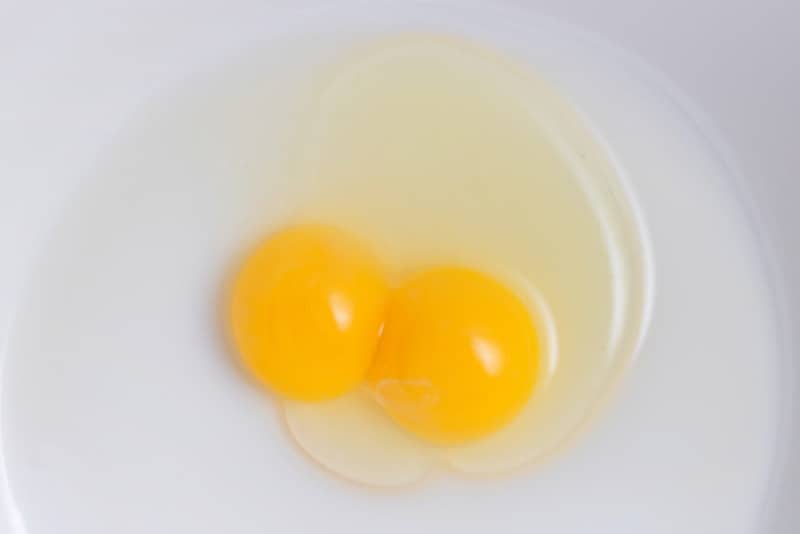
Multiple yolks are caused by rapid ovulation and they are most common in young birds that are just starting laying. Double yolkers are the most common, but eggs can be laid with three, four, or even more yolks. While some seem to be a single egg with multiple yolks, others appear to be multiple eggs in a single shell because they also have multiple and distinct albumins. Breeders have tried to breed birds that routinely produce multiple yolk eggs, but with no success.
Eggs with multiple yolks are safe. In fact, many owners celebrate them. After all, what is the only thing that is better than one yolk?
2. No Yolks
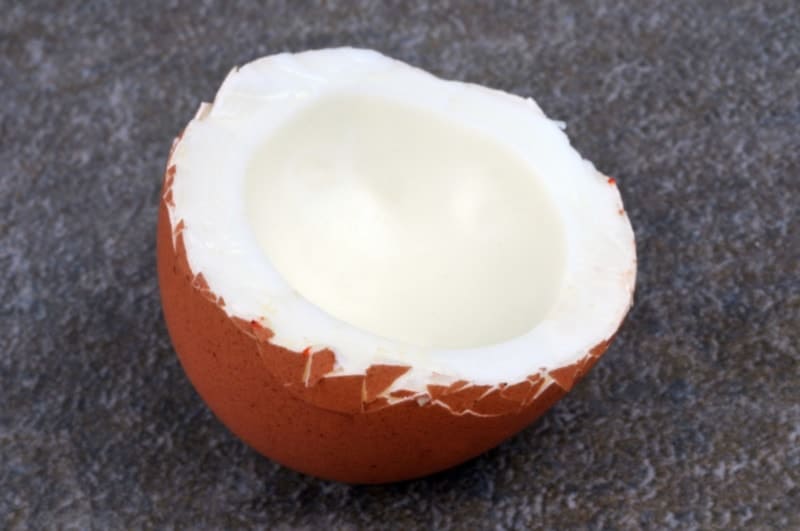
Also referred to as witch eggs, those with no yolks were once said to have been laid by roosters, although this obviously isn’t true. If a blood spot is present, the oviduct mistakenly treated this as a yolk. They can be caused by hormone-affecting drugs and may be present in young and old birds at the beginning or end of their laying cycle.
3. Pale Yolks
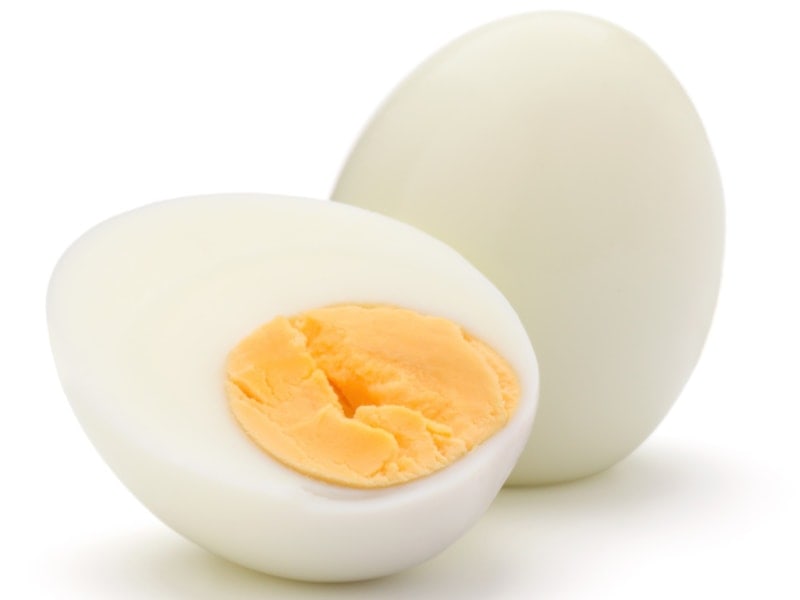
Pale yolks are quite common and may not always be diagnosed, especially not by novice owners. This problem is caused by poor nourishment and is a sign that the feed might be old or out of date. The birds would usually get color pigments from green or colored vegetables.
To fix this problem, feed a range of green and other colored vegetables and ensure that your feed is healthy.
4. White Yolks
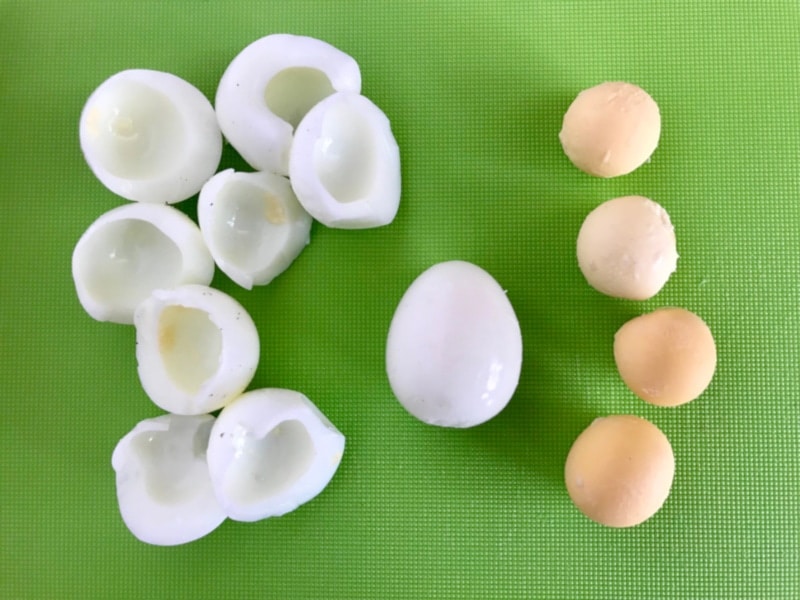
Although pale yolks are relatively common, pure white ones are much rarer. Although the yolk matches the color of the white, you can still clearly see that there is a distinct difference between the two.
The hen that laid an egg with a white yolk may need worming. Alternatively, it may simply be a white yolk layer, in which case they will always lay eggs that look like this. They may not look appetizing, but a white yolk is normally safe to consume.
5. Mottled Yolks
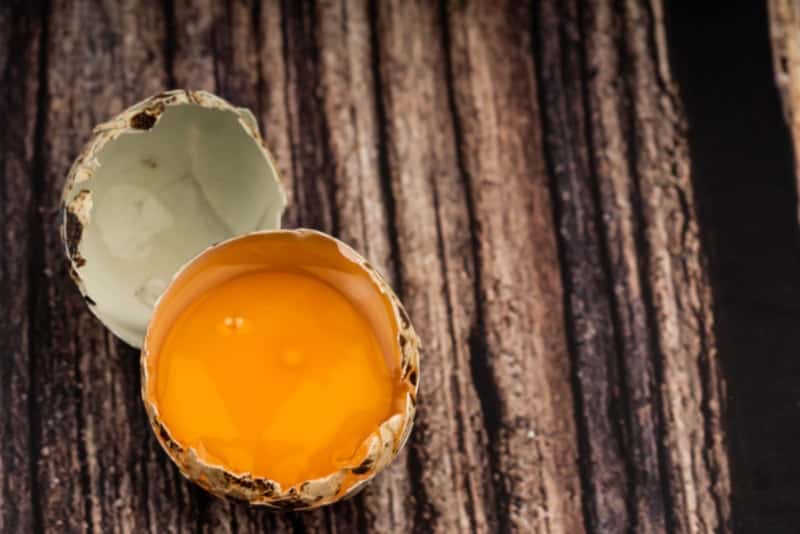
There are several possible causes of mottled yolks, but the most common is that of heat damage. The eggs could have been created by chickens that are suffering heat stress or the eggs themselves could have been stored at too high a temperature. Other possible causes include calcium deficiency in the hen’s diet.
To prevent mottled yolks, identify the cause, and then take corrective action.
Related Read: 10 Best Egg Incubator for Chickens, Ducks & Quails in 2021
6. Watery Whites
Watery whites are commonly caused when an egg has been stored too long and they are more commonly laid by old hens. This can also be a symptom of heavy metal poisoning and some other diseases.
7. Cloudy Whites

Cloudy whites are a sign that an egg was only very recently laid and has not had the opportunity to cool yet. There are no problems associated with eating these eggs. Preventing cloudy whites is just a case of leaving the egg longer before collecting and cracking it.
8. Small Eggs
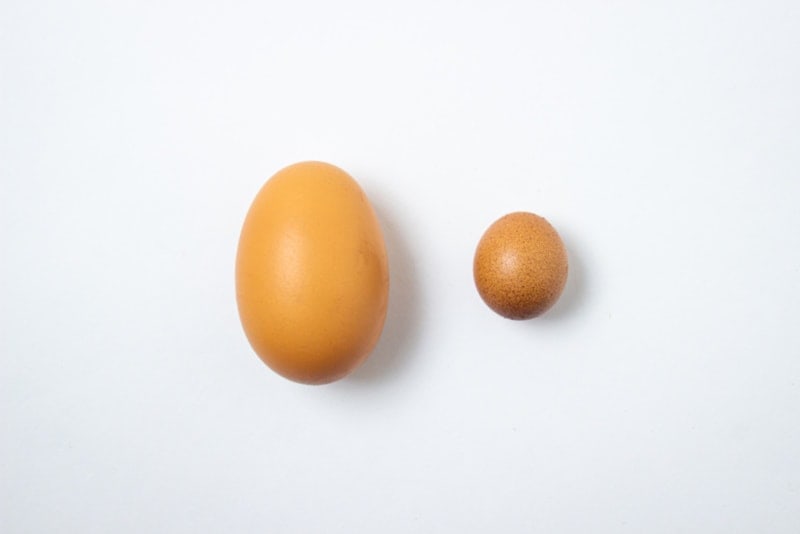
Naturally, some breeds of chicken lay smaller eggs than others, and some hens will lay smaller eggs than hens of the same breed. In fact, a hen might lay smaller eggs one day to the next, although they do tend to have some uniformity in egg size.
An undersized egg usually occurs during a pullet’s first attempt but may be caused by stress.
As long as the size is the only difference, these should be perfectly fine to eat, but you may need to double up on the number that you consume.
9. Misshapen Eggs
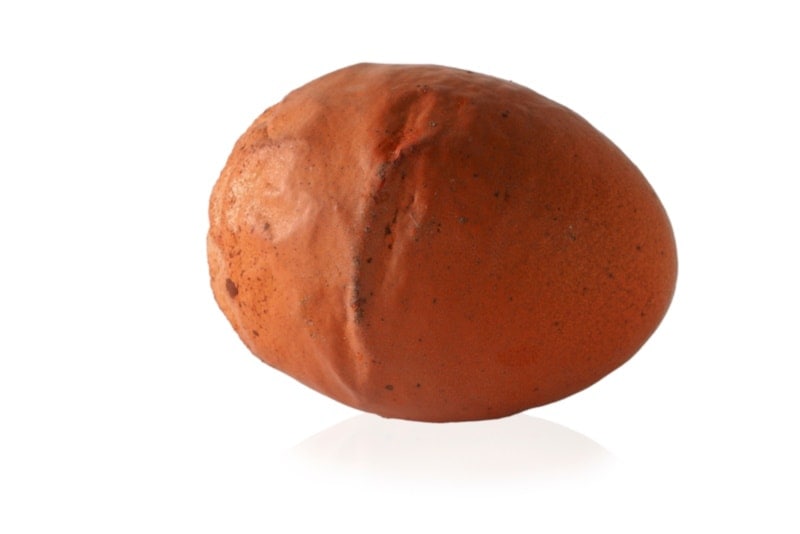
Another variance to look out for is in misshapen eggs. Elongated eggs are the most common form of a misshapen egg. As a one-off, this shouldn’t be too much of a concern, but if a hen regularly lays elongated or otherwise misshapen eggs, it could be a sign that you have too many hens in your coop or that it has egg drop syndrome.
10. Internally Cracked
Internally cracked eggs were damaged during the calcification process but were naturally repaired before being laid. This usually occurs because the rooster was too vigorous, which, in turn, can be caused because there are too many roosters in the flock, vying for the attention of the hens. Injury to the hen may also cause this problem.
The egg should be safe to eat, as long as there are no other signs of a problem.
11. Worms
These are thankfully very rare, but a worm-infested egg is a sign that the hen needs worming and you need to employ better parasite management.
A straightened chalazae can look like a worm but is not, and is perfectly natural and safe to eat.
12. Blood Spots

Blood spots can appear in or near the yolk and they can appear as blood-red or more of a brown or tan color. They can even appear white when they start out as a blood spot but change color when they undergo some form of a chemical reaction.
They look unappetizing and most people avoid eating eggs with blood spots.
13. Off-Flavored Eggs

Eggs can absorb and take on the smell and taste of nearby objects, so any off-flavored eggs may have actually just been sat too close to another item. This is especially common with strong flavors like garlic or onion. It is also possible that seed oils in feed can cause a fishy smell and taste, so if this is the off-taste that you’re experiencing, consider changing out the feed or treats that your hen receives.
14. An Egg in An Egg
This is essentially an egg inside another egg. Both eggs may occur with their shell, but one or the other may be missing its shell. This problem is rare, or rarely identified, and is most likely caused by stress.
Give the hen time and her egg production should return to normal. If not, you will need to identify any potential cause of stress and eradicate it.
15. Bloody Eggs
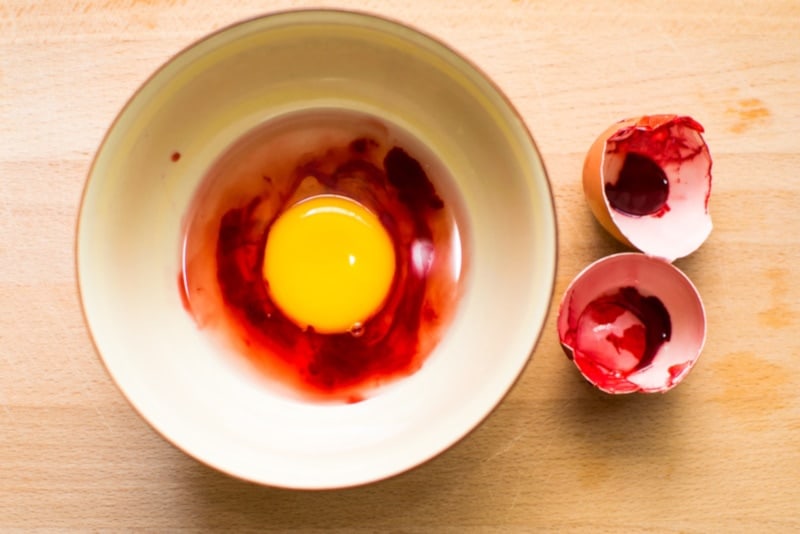
Bloodstained eggs are those that have bloodstains on the outside of the shell, rather than those with blood spots inside the egg. It can be common in young hens during their first lay, but it may be caused by serious illness or injury including a prolapsed cloaca. It is unappealing and most people leave these eggs.
16. Dirty Eggs
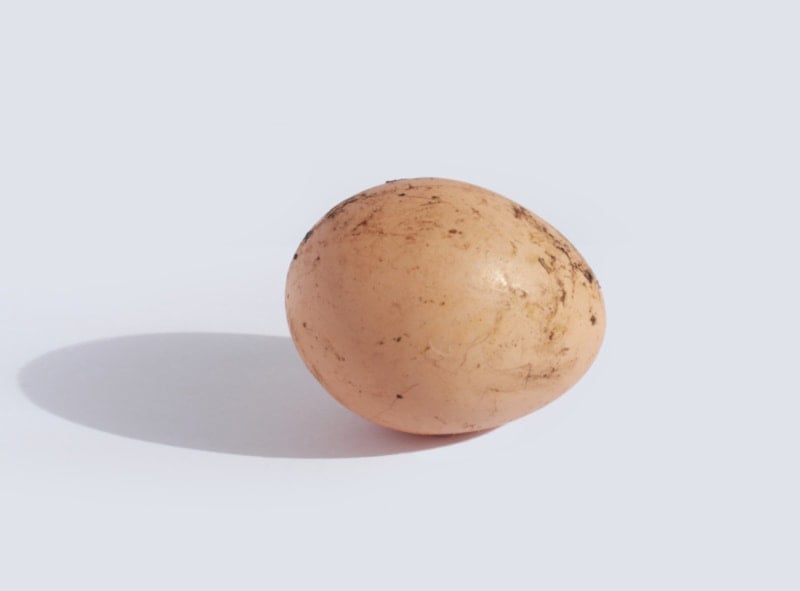
Dirty eggs are something of a standard and you will get at least some eggs, from time to time, that are covered in feces. If it happens regularly, it is a good sign that there is a nutritional or dietary issue with your flock and you will need to sort it, not only to prevent feces coated eggs but to ensure that your flock remains healthy.
Check dietary salt levels, fiber levels, and ensure that the water supply is healthy and safe.
17. No Shells
Shell-less eggs are quite rare, and exactly as the name suggests. They can occur in very young pullets that are not old enough to lay and their shell glands are not developed enough to create a strong shell. It can also be caused by toxins in the feed or poor salt levels in the diet. If it happens regularly, eliminate stress and increase calcium in the hen’s diet to fix the problem.
18. Soft Shells
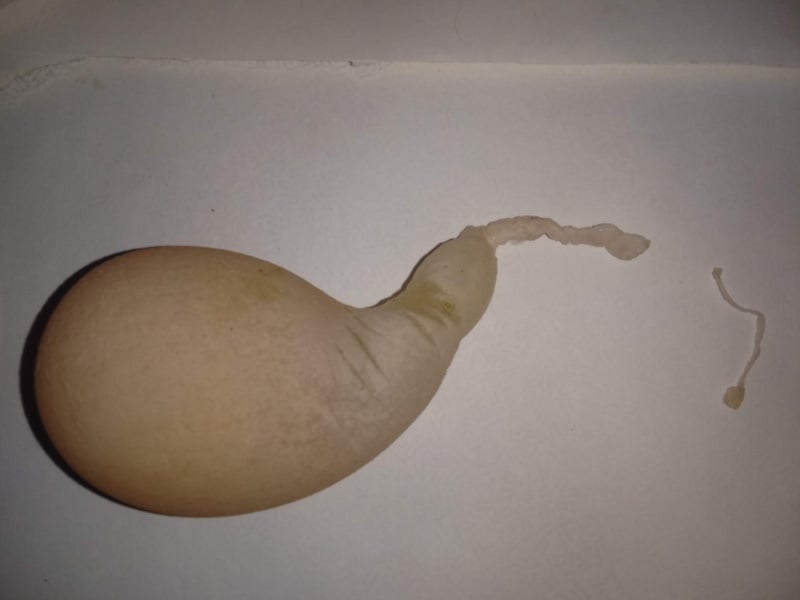
Soft-shelled eggs tend to come from older hens and the shell may be so soft that it easily rubs off when you touch it.
Like shell-less eggs, this problem can be caused by toxins in the feed, but it can also be caused by hens suffering heat stress or by a lack of calcium or salt in the diet.
19. Thin Shells
Thin shells are a problem because they tend to crack and break very easily. They can even crack when being laid and this tends to be a problem with rescue hens. They tend to produce a lot of eggs, but the quality of the eggs suffers. Dietary imbalances are another potential cause.
Try fixing salt and calcium levels to remedy the problem.
20. Rough Shells
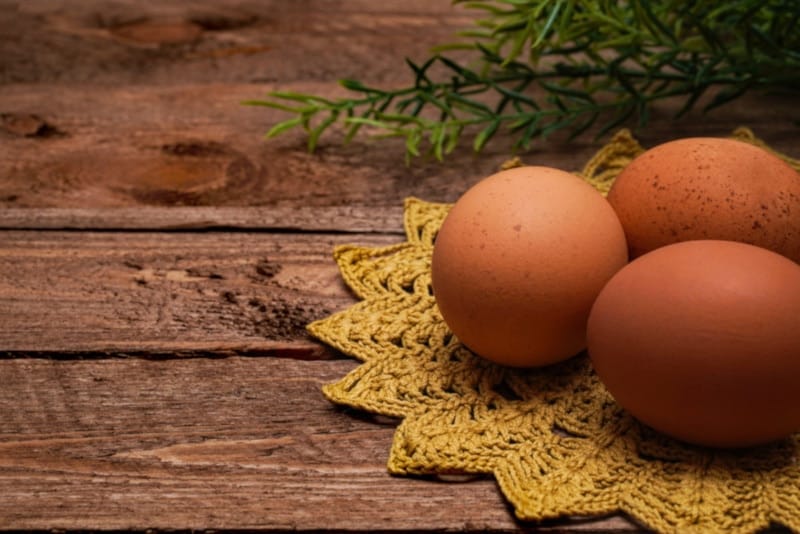
Sometimes referred to as corrugated shells because they resemble corrugated cardboard, eggs with rough shells may be caused by damage to the shell gland or the shell gland pouch.
Excessive antibiotic consumption is one of the possible causes of this illness, along with copper deficiency.
21. Wrinkled Shells
In eggs with wrinkled shells, the exterior of the shell has tighter lines than in those with corrugated shells. The problem is most often caused by stress, in which case the eggs might be safe to eat. However, if the issue is caused by illness, you should avoid eating the eggs and get treatment for your hens.
22. Pimpled Shells
Pimpled eggs look like they have calcified blemishes all over the shell. These hollow lumps of calcium may disappear when you touch them and the problem is usually caused by a mineral imbalance, although some old chickens do lay eggs like this too.
You might also be interested in: What is A Lash Egg? Salpingitis in Backyard Chicken (Explained)

Final Thoughts
You should know your hen’s eggs better than anybody, and while you can expect some typical coloring and shape, you must look for differences in the size, quality, and appearance of eggs. A sudden change can be indicative of a health problem or the onset of stress.
Check your flock’s diet, remove any potential causes of stress and, if you are in any doubt, do not eat the eggs and get veterinary assistance.
Featured Image Credit: Suzanne deDisse, Pixabay
